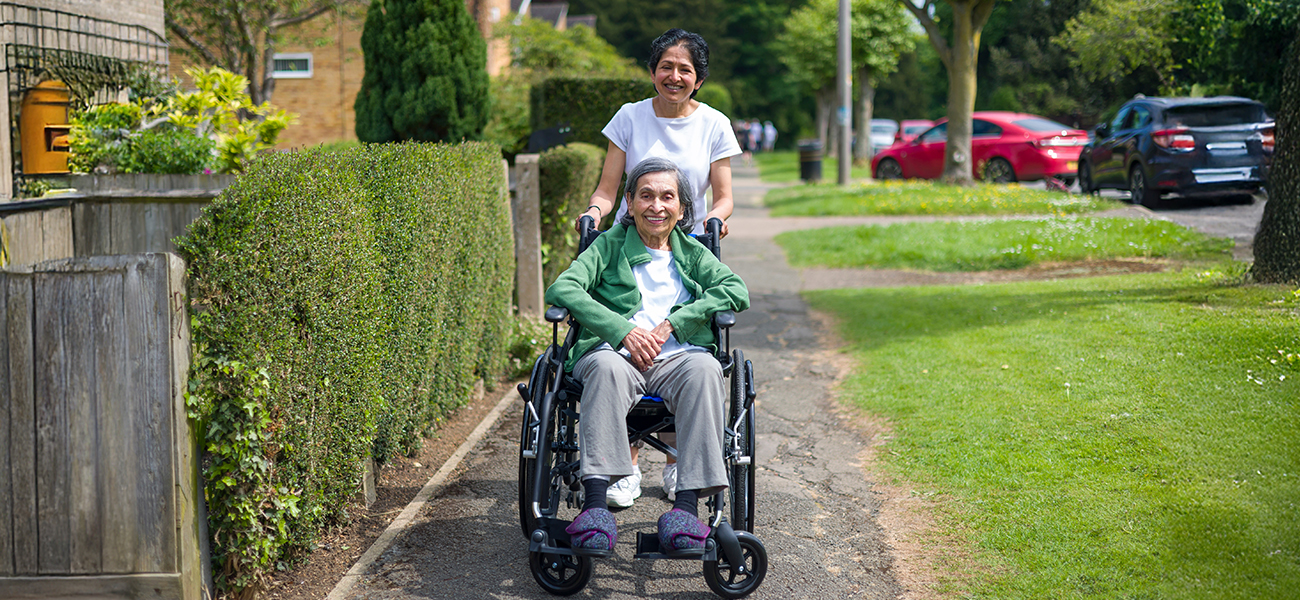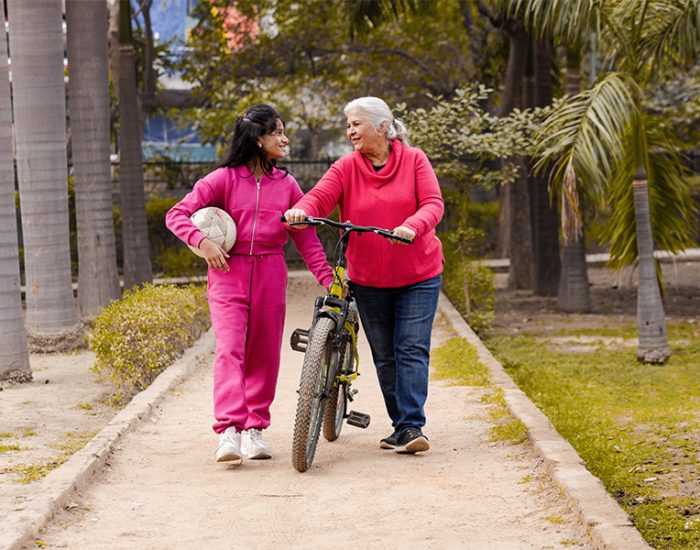My Mother-in-Law Can’t Move on Her Own: How Do I Help Her With Her Diapers?
Caring for a loved one who is immobile comes with its unique challenges, especially when it involves managing their diapering needs. Finding the right diapers for elderly women can make a significant difference in ensuring comfort, hygiene, and ease of care. For many caregivers, this situation can feel overwhelming at first, but with the right approach and tools, it becomes a manageable and even compassionate routine.
If your mother-in-law is unable to move independently, ensuring her hygiene and comfort while addressing her incontinence needs can significantly improve her quality of life. This guide will provide practical tips, step-by-step processes, and emotional support to help you navigate this sensitive yet essential aspect of caregiving.
Understanding the Challenges
Caring for someone with limited mobility requires patience and empathy. It’s essential to acknowledge the physical and emotional challenges both you and your mother-in-law may face.
For Your Mother-in-Law:
- Loss of Independence: She may feel embarrassed or frustrated about depending on others for such personal tasks.
- Discomfort and Health Risks: Prolonged immobility increases the risk of skin irritation, rashes, and infections if proper care is not taken.
- Emotional Impact: She may feel self-conscious about discussing or addressing her needs.
For You as a Caregiver:
- Physical Strain: Assisting with diaper changes can be physically demanding, especially if you’re unfamiliar with proper techniques.
- Emotional Stress: Balancing care responsibilities with your personal life can sometimes feel overwhelming.
Acknowledging these challenges is the first step toward building a care plan that ensures both dignity and efficiency.
Step-by-Step Guide to Helping With Diaper Usage
Prepare the Essentials
Having all necessary items within reach saves time and minimizes discomfort for both you and your mother-in-law.
- Adult Diapers: Choose high-absorbency diapers that fit her comfortably. Look for leak-proof and skin-friendly options.
- Gloves: Disposable gloves help maintain hygiene.
- Cleansing Wipes: Use fragrance-free, alcohol-free wipes to clean the skin gently.
- Barrier Cream: Apply to prevent rashes or irritation.
- Disposable Pads or Sheets: Protect the bed or chair from leaks.
- Waste Disposal Bags: For discreet and hygienic disposal of used diapers.
Create a Comfortable Environment
Your mother-in-law’s comfort and dignity should always come first.
- Maintain Privacy: Ensure the room is private and warm enough for her comfort.
- Positioning: If she is bedridden, adjust her bed to a suitable height to avoid straining your back. For wheelchair users, ensure she is securely seated.
- Explain the Process: Let her know what you’re about to do to ease any anxiety.
Changing the Diaper on a Bed
If your mother-in-law is bedridden, follow these steps:
- Position Her Safely: Gently roll her to one side. Place a disposable pad under her to protect the bed.
- Remove the Used Diaper: Undo the adhesive tabs and carefully fold the diaper inward to contain any mess. Use wipes to clean her skin thoroughly.
- Check for Skin Issues: Look for redness, rashes, or sores. Apply barrier cream if needed.
- Place a New Diaper: Roll her back onto her side and tuck one side of the diaper under her. Roll her to the other side and pull the diaper into place.
- Secure the Tabs: Adjust the diaper for a snug but comfortable fit.
Changing the Diaper in a Wheelchair
If she uses a wheelchair, the process differs slightly:
- Ensure Stability: Lock the wheelchair wheels to prevent movement.
- Remove Clothing: Assist her in removing or adjusting clothing as needed.
- Remove the Old Diaper: Gently lift her slightly or tilt her forward to remove the diaper. Clean her thoroughly with wipes.
- Apply a New Diaper: Position the new diaper between her legs, ensuring the adhesive tabs are at the back. Fasten securely.
Maintaining Hygiene
Cleanliness is critical for preventing infections and ensuring her comfort.
- Regular Changes: Change her diaper promptly when it’s soiled to prevent skin irritation.
- Daily Cleansing: Incorporate a daily cleansing routine using mild soap and water or wipes.
- Skin Protection: Apply moisturizing creams or powders to keep her skin healthy.
Additional Tips for Caregivers
Preventing Physical Strain
Changing diapers for someone immobile can be physically taxing. Protect yourself by following these practices:
- Use Proper Lifting Techniques: Bend your knees and use your legs to lift, not your back.
- Invest in Assistive Devices: Tools like patient lifts or slide sheets can make the process easier.
- Seek Help: Don’t hesitate to ask a family member or professional caregiver for assistance when needed.
Fostering Emotional Well-Being
Maintaining your mother-in-law’s dignity and emotional comfort is just as important as her physical care.
- Be Reassuring: Use a calm and positive tone to ease her discomfort or embarrassment.
- Encourage Communication: Let her express her concerns or preferences about her care.
- Show Respect: Treat her with the same care and respect you’d want for yourself.
Stay Organized
Establishing a routine and staying prepared can make the process smoother.
- Track Diaper Changes: Maintain a schedule to ensure timely changes.
- Stock Up on Supplies: Always have an ample supply of diapers and cleaning products.
- Monitor Her Health: Pay attention to signs of urinary tract infections, skin issues, or other complications.
Balancing Caregiving and Self-Care
As a caregiver, it’s easy to prioritize your loved one’s needs over your own, but self-care is essential for long-term caregiving.
- Take Breaks: Schedule time for yourself to recharge.
- Seek Support: Join caregiver support groups or talk to friends and family for emotional support.
- Consider Professional Help: Hiring a part-time caregiver or nurse can alleviate your workload and provide specialized care.
When to Consult a Healthcare Professional
Certain situations may require professional intervention:
- Recurring Skin Issues: Persistent rashes or sores need medical attention.
- Infections: Signs of a urinary tract infection, such as fever or unusual odor, require immediate consultation.
- Mobility Challenges: If her condition changes and caregiving becomes more physically demanding, consider consulting a physical therapist for advice.
Conclusion
Helping your mother-in-law with her diapering needs is an act of care, compassion, and love. While it may feel daunting at first, with preparation, patience, and the right techniques, you can provide her with the dignity, comfort, and hygiene she deserves. Choosing the right diapers for elderly women ensures better protection, comfort, and ease of use, making the process smoother for both of you.
Remember, you are not alone in this journey. Whether it’s seeking professional guidance, using assistive devices, or reaching out to support networks, there are resources available to make this process more manageable for you and your loved one. Together, you can navigate this stage of caregiving with grace and positivity, ensuring that she feels cared for and cherished every step of the way.
FAQ’s
2. What type of diaper is best for bedridden elderly people?
For elderly people who cannot move or walk, tape-style adult diapers are often the most helpful. These diapers are designed to be put on easily while lying down. They open fully and wrap around the waist and legs, allowing a secure and customized fit. Tape diapers are useful for people who need full-time support and are unable to use the bathroom independently. They provide strong absorption and reduce leakage. Since caregivers can change them from the sides, there's less need to lift the person, reducing strain. Also, many tape-style diapers come with indicators to show when a change is needed. Choosing a breathable and skin-friendly material also helps avoid rashes and discomfort. So, for immobile or bedridden elders, a tape-style diaper gives better control, comfort, and ease of use for both the user and the helper.
3. How do I clean my mother-in-law properly while changing her diaper?
Start by using disposable gloves and preparing clean wipes, water, soft towels, and diaper rash cream. After gently removing the used diaper, use wipes or a soft wet cloth to clean from front to back to prevent infections. Make sure the skin folds are also cleaned properly. If needed, rinse the area with lukewarm water using a soft sponge or cloth and pat the skin dry completely. Do not rub harshly, as the skin may be delicate. Once dry, apply a light diaper rash cream if there are signs of redness or irritation. Always make sure the skin is fully dry before putting on a fresh diaper to prevent moisture build-up. Cleaning the area well after each change reduces the chances of skin problems, keeps the person comfortable, and maintains their hygiene and dignity.
4. How often should I change an adult diaper for someone who is immobile?
For a person who can’t move on their own, diapers should ideally be checked every 3–4 hours and changed immediately if wet or soiled. Keeping someone in a wet diaper for long can cause skin irritation, infections, or pressure sores. Some adult diapers come with wetness indicators, which can help you know when it’s time to change. Nighttime diapers may last longer if designed for overnight use, but they should still be changed first thing in the morning. If your mother-in-law has a sensitive bladder or bowel condition, you may need to change her more often. Maintaining a schedule for changes can help reduce discomfort and health risks. Remember, keeping the skin clean and dry is the key to preventing rashes, bad smells, and discomfort for someone who cannot communicate or move easily.
5. Can I change my mother-in-law’s diaper alone, or do I need help?
Yes, you can change her diaper alone with the right preparation and practice. Place a waterproof sheet or underpad beneath her. Gather all supplies—new diaper, wipes, rash cream, gloves, and disposal bag—before starting. Use a tape-style diaper, which is easier to manage while lying down. Gently roll her to one side, remove the soiled diaper, clean the area, and place the fresh diaper underneath. Then, roll her to the other side to finish adjusting and securing the diaper. If she is heavy or if you find the process physically difficult, having another person to assist can help, especially for lifting or rolling. It’s important to protect your own back and posture too. If you are new to this, taking help from a nurse once or twice to learn the right method can make you more confident and safe.
6. How can I keep my mother-in-law’s skin safe from diaper rashes?
To prevent diaper rashes, keep the skin clean and dry at all times. Change her diaper as soon as it becomes wet or soiled. Clean the area gently using unscented wipes or soft cloth and lukewarm water, and dry it completely before putting on a new diaper. Apply a diaper rash cream or petroleum jelly as a protective layer to stop moisture from irritating the skin. Choose breathable, soft diapers that are not too tight. Avoid using powder or scented products, which can make rashes worse. Give the skin some air time between changes if possible. If a rash appears, treat it early and keep an eye on whether it gets worse. Sometimes, repeated rashes may need a doctor’s advice. A clean and gentle routine is the best way to keep the skin healthy and rash-free.
7. What should I do with used adult diapers after changing?
Used adult diapers should be disposed of carefully to keep the room clean and odor-free. After removing the soiled diaper, fold it tightly, tape or roll it to secure the contents, and place it in a sealed disposable bag. Use separate bags made for medical or sanitary waste, if available. Do not flush diapers, as they can block pipes. Keep a covered bin in the room for easier and safer disposal. Empty it daily. Clean your hands well with soap and water or use sanitizer after every change. If you're using gloves, remove and throw them out safely. Keeping the area well-ventilated also helps reduce smells. Proper diaper disposal is important not just for hygiene but also for the comfort and dignity of the person you're caring for.
8. How can I make the diaper-changing process more comfortable for my mother-in-law?
Start by creating a calm and respectful environment. Talk to her gently before and during the process to make her feel safe. Keep the room warm and comfortable. Use soft lighting and soothing music if that helps. Make sure your hands are warm and all items are within reach to avoid delays. Use diapers that fit well and don’t cause discomfort. Keep the changing routine quick but careful, so she doesn’t feel cold or embarrassed. If she feels nervous or shy, cover her with a cloth while changing. Always be gentle when rolling or moving her. Let her know what you are doing at each step. Your tone, expressions, and movements make a big difference. Making her feel respected and cared for will ease her stress and improve her overall well-being.
9. Are there special tips for changing diapers at night?
At night, use high-absorbency diapers made for overnight use. These help avoid leaks and allow for longer sleep without disruption. Before bedtime, make sure your mother-in-law is clean and dry, and use a diaper rash cream to protect her skin through the night. Place a soft waterproof underpad on the bed to catch any spills. Keep the room dimly lit and have your supplies organized nearby, so you can handle quick changes if needed. If she’s in deep sleep, avoid waking her unless the diaper is very wet or soiled. If changes are needed at night, keep movements gentle and soft to avoid disturbing her too much. With the right products and a bedtime routine, nighttime diaper changes can be managed without affecting her comfort or rest.
10. What if my mother-in-law feels embarrassed about wearing diapers?
It's common for elderly people to feel shy or upset about wearing diapers, especially if they once lived very independently. It’s important to talk to her kindly and explain that diapers are just tools to make life easier, safer, and more comfortable. Let her know it’s nothing to be ashamed of and that many people use them during recovery or aging. Keep her clean and well-dressed so she feels confident. Choose soft, comfortable diapers that don’t feel bulky. Avoid making her feel like a burden. Focus on her dignity—always be respectful, patient, and gentle. When she sees that you’re calm and accepting, she may slowly begin to accept the change herself. Remember, your positive attitude will help her feel more relaxed and emotionally secure.






















